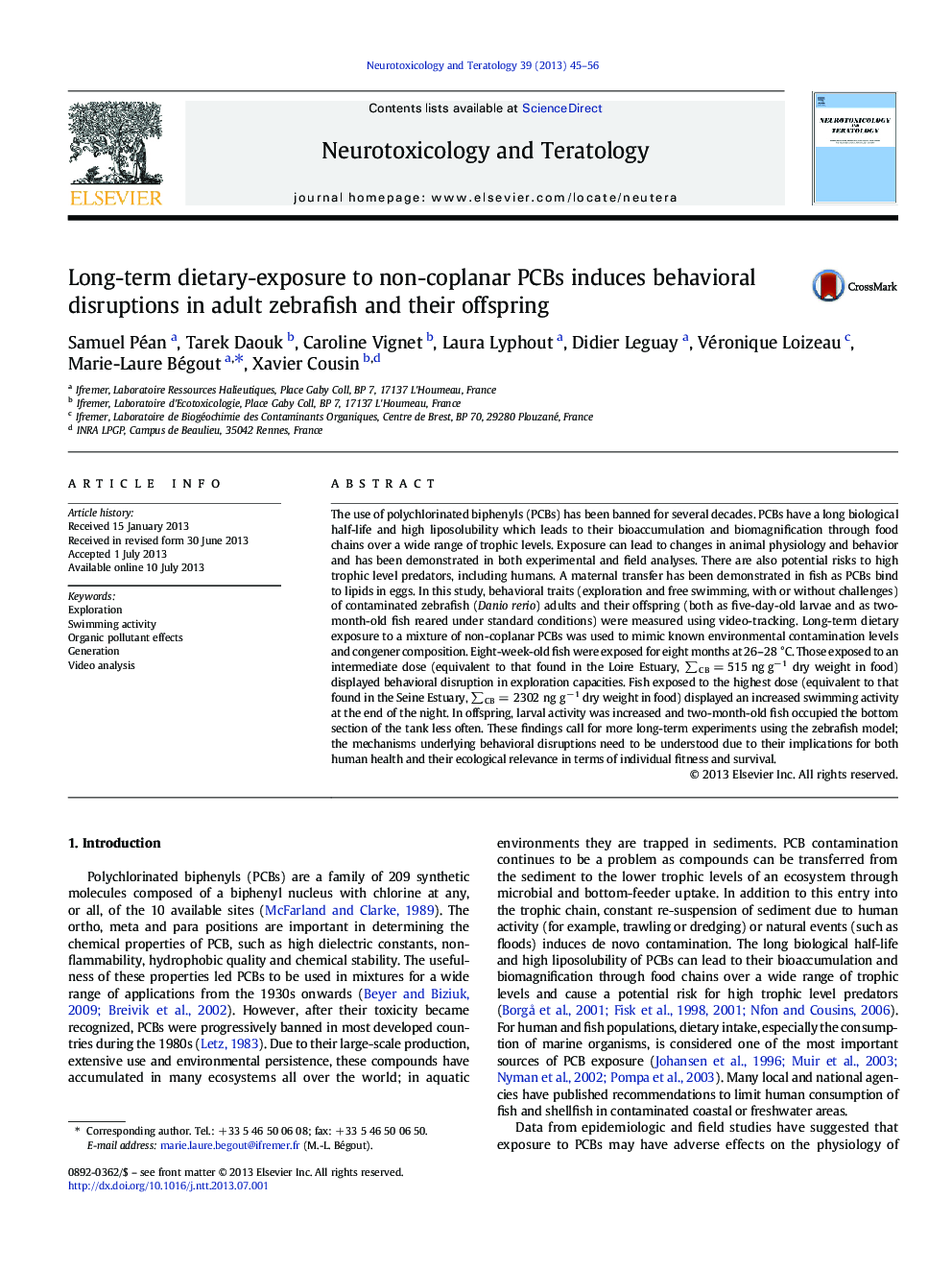| کد مقاله | کد نشریه | سال انتشار | مقاله انگلیسی | نسخه تمام متن |
|---|---|---|---|---|
| 2591089 | 1562096 | 2013 | 12 صفحه PDF | دانلود رایگان |

• Zebrafish lifecycle exposure to PCB mixture with non-coplanar congeners
• Behavioral disruption in adults and progeny after 8 mo. of PCB contamination
• Medium dose exposed fish showed over reaction in challenging tests.
• High dose exposed fish showed increased swimming activity at the end of night.
• Progeny showed hyperactivity as larvae and lower home base behavior as juvenile.
The use of polychlorinated biphenyls (PCBs) has been banned for several decades. PCBs have a long biological half-life and high liposolubility which leads to their bioaccumulation and biomagnification through food chains over a wide range of trophic levels. Exposure can lead to changes in animal physiology and behavior and has been demonstrated in both experimental and field analyses. There are also potential risks to high trophic level predators, including humans. A maternal transfer has been demonstrated in fish as PCBs bind to lipids in eggs. In this study, behavioral traits (exploration and free swimming, with or without challenges) of contaminated zebrafish (Danio rerio) adults and their offspring (both as five-day-old larvae and as two-month-old fish reared under standard conditions) were measured using video-tracking. Long-term dietary exposure to a mixture of non-coplanar PCBs was used to mimic known environmental contamination levels and congener composition. Eight-week-old fish were exposed for eight months at 26–28 °C. Those exposed to an intermediate dose (equivalent to that found in the Loire Estuary, ∑CB = 515 ng g− 1 dry weight in food) displayed behavioral disruption in exploration capacities. Fish exposed to the highest dose (equivalent to that found in the Seine Estuary, ∑CB = 2302 ng g− 1 dry weight in food) displayed an increased swimming activity at the end of the night. In offspring, larval activity was increased and two-month-old fish occupied the bottom section of the tank less often. These findings call for more long-term experiments using the zebrafish model; the mechanisms underlying behavioral disruptions need to be understood due to their implications for both human health and their ecological relevance in terms of individual fitness and survival.
Journal: Neurotoxicology and Teratology - Volume 39, September–October 2013, Pages 45–56